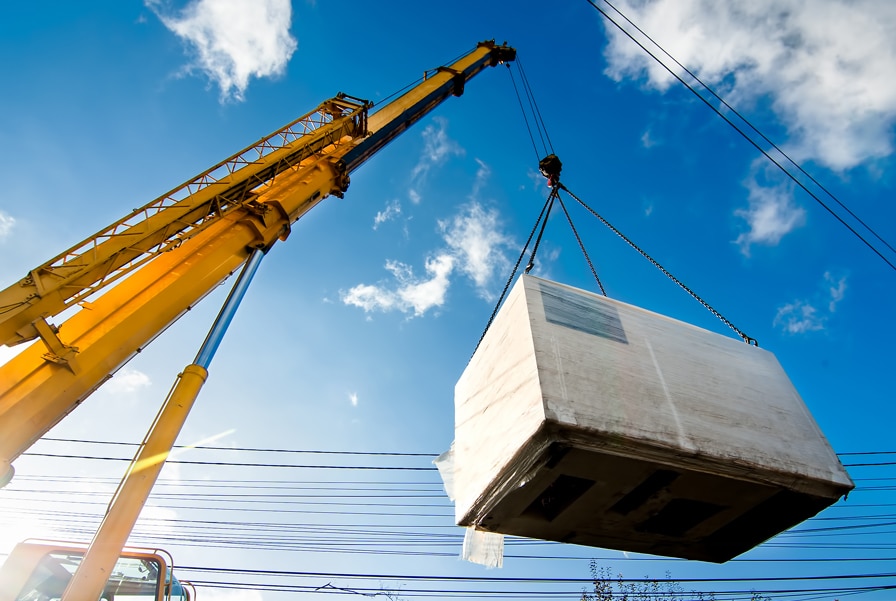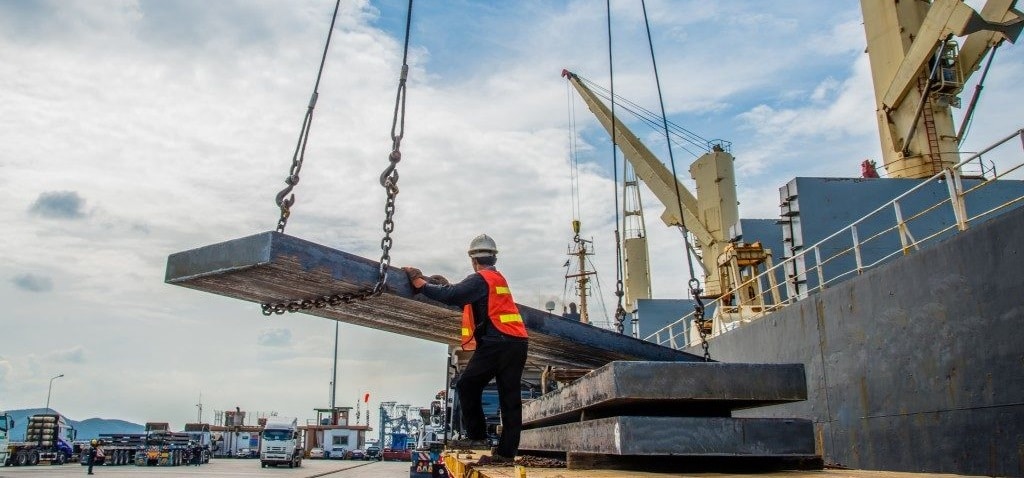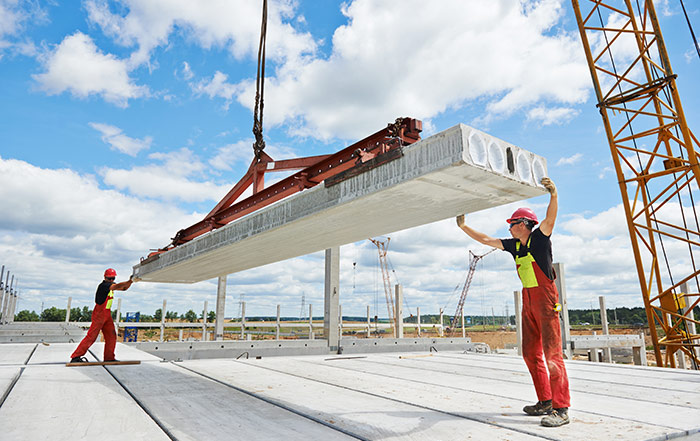
Rigging and slinging, sometimes also referred to as hoisting, is an important step in the maneuvering of heavy objects in many workplaces. It is most common to see rigging done on construction sites, or out at sea on cargo ships. Sometimes it is impossible to move an object through other means, so it becomes necessary to employ the services of a rigger. While this can be done on land or while out at sea, it is essential that whoever is undertaking the task of rigging and slinging knows how to do so safely, so that they are not put at risk, and so that those around them are not exposed to danger. Safe rigging is important because there are many variables that are at play while a rigger attempts to hoist a large object. Rigging is not a task that should be completed in a hurry. It requires knowledge, mathematical precision, and determination.
What is Rigging and Slinging?
To understand the job that a dedicated rigger undertakes, it is first a smart idea to understand the circumstances where rigging was first commonly used. Rigging was first done on sailing ships, where ropes were used to hoist sails. Ropes and pulleys could also be used to lift and haul objects, as the means to do so were quite limited back in the day. Gradually, the technology that could be used to aid a rigger in their lifting and hauling developed substantially, and traditional rope did not have to be used as much, if at all. The term rigging has it roots in the idea of preparation. In other words, someone who is rigging and slinging will be expected to prepare an object to be safely lifted. Nowadays, rigging is done using a mix of mechanical devices and cranes. In place of a crane, rigging can also be done using a block and tackle. Other than being asked to raise or lift an object, riggers might even be expected to roll or slide one as well. Riggers working out at sea and on land, in such places as constructions sites, will use the following rigging and slinging equipment to perform any job asked of them:
- Cables
- Chains
- Chain hoists/motors
- Clamps
- Clevis
- Lifts
- Lifting bags (underwater)
- Master links
- Jacks
- Pulleys
- Shackles
- Slings
- Straps
- Turnbuckles
- Winches
- Wire rope
What is Expected of a Rigger?

On top of being expected to safely use the above equipment, riggers must also be capable of performing calculations and techniques to deftly get their loads around obstacles and place them at the appropriate location and height. The job asks way more of a person than just “lifting objects”, as it requires someone with technical know how and quick-thinking capabilities. People best suited for this job are usually those who show some interest in engineering.
At all times, a rigger must know:
- Load and hardware weights
- Hoisting capacity
- Working load limits of equipment
Once all the above variables are known, a rigger must prioritize stability above everything else, to ensure maximum safety. Having a trained rigger is expected, but having an experienced one can be very beneficial, as they will be more likely to recognize potential hazards, so that they can be avoided. Riggers should know what techniques to use in any given scenario that is presented to them. On top of literally carrying out rigging and slinging, a rigger is also responsible for equipment maintenance, so that everything remains in working order, and potential hazards are therefore minimized. Riggers should also communicate their intentions with crane operators while a task is being performed, so that everyone is aware of what the procedure is to get to a common goal.
What are Some Rigging and Slinging Hazards?
First and foremost, one of the greatest hazards and possible sources of rigging accidents is operators without the appropriate training. Furthermore, someone lacking the knowledge required to properly perform the duties expected of a rigger is a liability to themselves and to anyone nearby.
Here are some additional hazards that riggers should be wary of:
- Hoisting
- Unknown working load limits
- Defective parts
- Unreliable equipment
- Wind
- Weather
- Electricity
- Line not vertical
- Capacity
- Swinging loads
- Equipment condition
- Moving forces
- Tackle weight
- Slings
- Damaged
- Unknown maximum capacity
- Sharp bends
- Rust
- Avoid hand-spliced eyes (Use Flemish Spliced Eyes)
- Never wrap around a hook (Use eye)
- Bends near a splice or fitting
- Unsafe angles
- Slings with more than two legs (must be able to support weight with at least two legs)
- Friction (Use thimbles and shackles)
- Multiple rope eyes (Use shackle)
- Loads
- Shifting or dislodging
- Uncontrolled motion
- Unhooked or unslung before landing
- Unmarked beams
- Hoist rope attached to load
- No centre of gravity
- Pinch points
- Wire rope (Wear gloves)
- Loose slings going flying
When rigging and slinging, remember to take important precautions, such as never working under a suspended load. By being aware of all these hazards and sources of hazards, including others that may have been missed (refer to the appropriate hoisting and rigging safely manuals of your jurisdiction), a rigger can be sure that they are conducting themselves in the safest way possible.
What are some Rigging and Slinging Techniques?

There are many techniques that go into the process of rigging. Any task that you perform while rigging can have a few different methods, from hitching techniques:
- Single vertical hitch
- Choker hitch
- Single
- Double
- Basket hitch
- Bridle hitch
To techniques used while performing hand signals:
- Hoist
- Lower
- Bridge
- Trolley travel
- Stop
- Emergency stop
- Multiple trolleys
- Move slowly
- Etc.
Rigging and slinging techniques are necessary for a few reasons. Firstly, they are usually tried and true, having been based on fundamental physics principles and engineering standards. Rigging techniques also tend to not vary too much across North America, so that all riggers are using the same techniques and communication becomes much easier because of this. By learning a technique and repeating it over and over, a rigger is less likely to make an unnecessary mistake while performing their tasks. Finally, following known techniques while rigging can sometimes help an individual with avoiding or lessening legal issues should an unforeseen event occur. Learning and then following rigging and slinging techniques is ultimately in your best interests. Fortunately, the best way to learn about the various techniques is to take a rigging and slinging safety course.
Where can I take a rigging and slinging safety course?
While it is necessary to do hands-on rigging and slinging training, it can be very beneficial to educate yourself through other means. As mentioned earlier, being an experienced rigger can be very important when it comes to managing safety on a worksite. However, this experience can only come with time and exposure. The best way to ensure that you keep yourself and others safe when starting out is to increase that exposure in any way possible. Online safety courses can be a great way to obtain other knowledge or just reinforce existing information that you have picked up in the past.
This safe rigging and slinging course is a place where you can start to do just that! In this course you will cover practices, techniques and regulations that are in accordance with the Canadian Standards Association, the American National Standards Institute, and the American Society of Mechanical Engineers. The course, which is intended for rigging and supervisory personnel who work with all types of hoisting equipment, will teach you safe chain rigging techniques and much more. After successfully completing the course, you will be given a certificate of completion that will demonstrate to potential employers that you have the tools to be a safety-oriented rigger.






